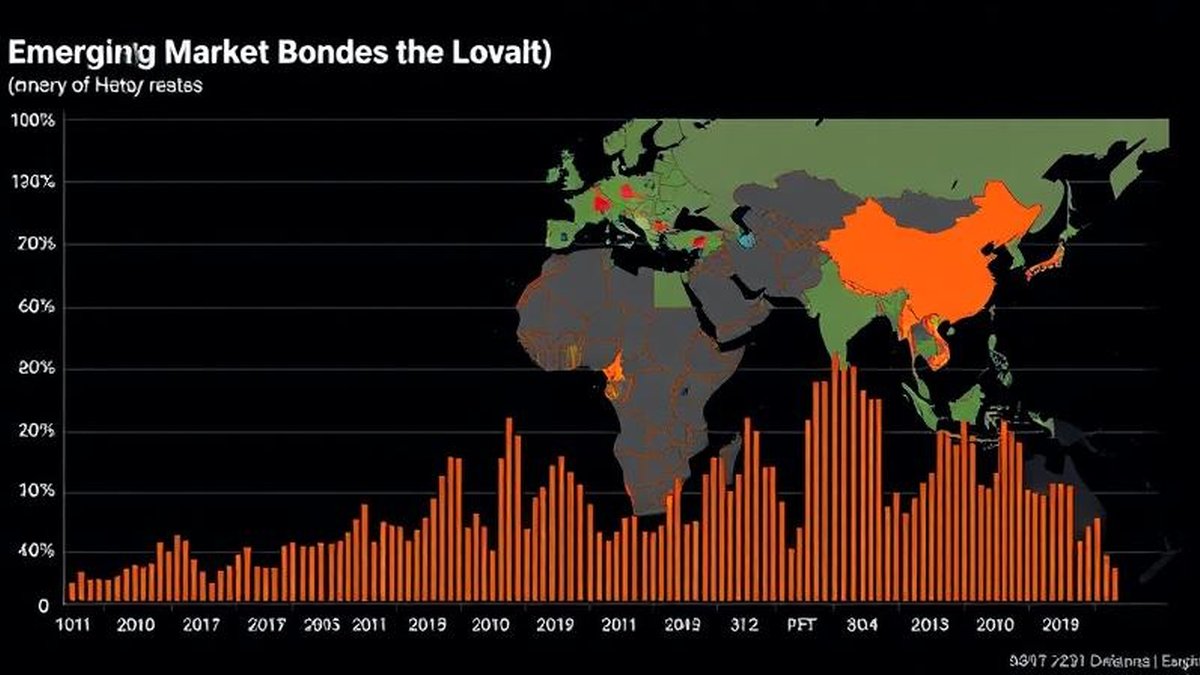Emerging Market Debt Rebounds as Softer Dollar and Ample Liquidity Revive Yield Hunt
Emerging market (EM) debt has regained investor attention as global financial conditions ease and the U.S. dollar weakens. After months of cautious positioning, portfolio managers are once again rotating into EM sovereign and corporate bonds, drawn by attractive real yields, improving external balances, and a more benign inflation backdrop. The shift underscores a structural reassessment of global fixed-income opportunities as investors seek diversification and income in a post-tightening world.
1. Global Backdrop: Softer Dollar and Liquidity Tailwinds
The recent moderation in the U.S. dollar has been a pivotal catalyst for EM debt. As the greenback softens, countries with significant foreign-currency liabilities experience relief in repayment burdens, boosting investor confidence in their debt sustainability. Simultaneously, improving global liquidity — fueled by stable developed-market yields and selective monetary easing — has reopened capital channels into riskier but higher-yielding assets.
Central banks in several advanced economies have signaled a pause or slowdown in tightening cycles, reducing upward pressure on global yields. This stabilization has allowed EM local markets to regain footing, as yield differentials once again appear compelling. The convergence of softer inflation trends and modest growth resilience in key EM economies has enhanced the relative attractiveness of their bonds, particularly when compared to compressed yields in developed markets.
2. Investor Behavior: Rotation Toward High-Carry Opportunities
Flows into EM fixed income this quarter have come from both traditional long-only funds and flexible macro strategies. Many asset managers are rebalancing portfolios to capture yield in economies with credible policy frameworks, manageable fiscal deficits, and improving external accounts. Countries in Latin America and parts of Asia — where central banks hiked early and now stand ahead of the disinflation curve — have been among the primary beneficiaries.
Corporate debt issuance has also drawn interest, particularly among exporters and firms with dollar revenues that hedge foreign exchange exposure naturally. In the sovereign space, bonds with shorter duration and strong reserve positions are outperforming, reflecting investor preference for liquidity and resilience. The appetite extends beyond hard-currency bonds, as local-currency EM debt benefits from stronger FX and rising real yields, especially in markets like Brazil, Mexico, and Indonesia.
3. Structural Shifts: Repricing of Risk and Policy Credibility
One of the defining features of the current cycle is the differentiation between high-quality and vulnerable credits. Investors are no longer treating EM as a homogeneous asset class. Instead, pricing reflects granular assessments of policy credibility, institutional strength, and external buffers. Sovereigns that have improved fiscal transparency and built credible inflation-targeting regimes are seeing spreads tighten, while those grappling with political instability or unsustainable debt dynamics remain under pressure.
In parallel, the commodity cycle is offering mixed signals. While energy and metals exporters are benefiting from stable demand and supply-side constraints, import-dependent economies continue to face vulnerabilities tied to global price swings. This divergence underscores the importance of bottom-up credit analysis and selective positioning across geographies and sectors.
4. Risks and Challenges: Volatility, Politics, and Global Shocks
Despite the renewed optimism, risks are far from negligible. Political transitions in key EM economies, volatile commodity prices, and lingering concerns about global growth could disrupt inflows. A sudden reversal in the U.S. dollar or a repricing of developed-market rate expectations would also challenge the EM debt rally. Moreover, event risk — such as elections, fiscal slippages, or geopolitical shocks — can lead to abrupt spread widening.
Another layer of complexity arises from the global credit cycle. While EM issuers benefit from diversified funding sources, external shocks or tightening liquidity conditions could expose weaker credits. Thus, fund managers emphasize active hedging and flexible duration management to navigate potential volatility.
5. Outlook: Yield Advantage Persists, but Selectivity Is Key
Looking ahead, EM debt appears poised to remain a core component of global fixed-income strategies. The combination of attractive nominal and real yields, improving fundamentals, and fading policy headwinds provides a supportive backdrop. Yet, the path forward will demand selectivity. Investors are expected to favor sovereigns with strong institutional frameworks, credible monetary policies, and improving current accounts, while remaining cautious toward high-beta names reliant on external financing.
In this environment, local-currency markets may continue to gain share as FX appreciation and inflation moderation enhance total returns. Meanwhile, hard-currency spreads could compress further if global risk appetite holds steady and U.S. yields stay anchored. The broader takeaway is that EM debt is evolving from a tactical trade to a strategic allocation — one that balances yield opportunities with the necessity of disciplined risk control.
Key Takeaway
The renewed inflows into emerging market debt reflect a confluence of cyclical and structural dynamics: a softer dollar, improved liquidity, and greater differentiation across credits. As global investors recalibrate portfolios in a lower-growth, lower-inflation world, EM bonds offer a valuable mix of income and diversification — provided investors remain vigilant toward idiosyncratic risks and global macro shifts.
For more detailed analysis on sovereign risk, currency strategies, and global fixed-income allocation, explore our Altcoin Analysis | Exchanges | Apps & Wallets
